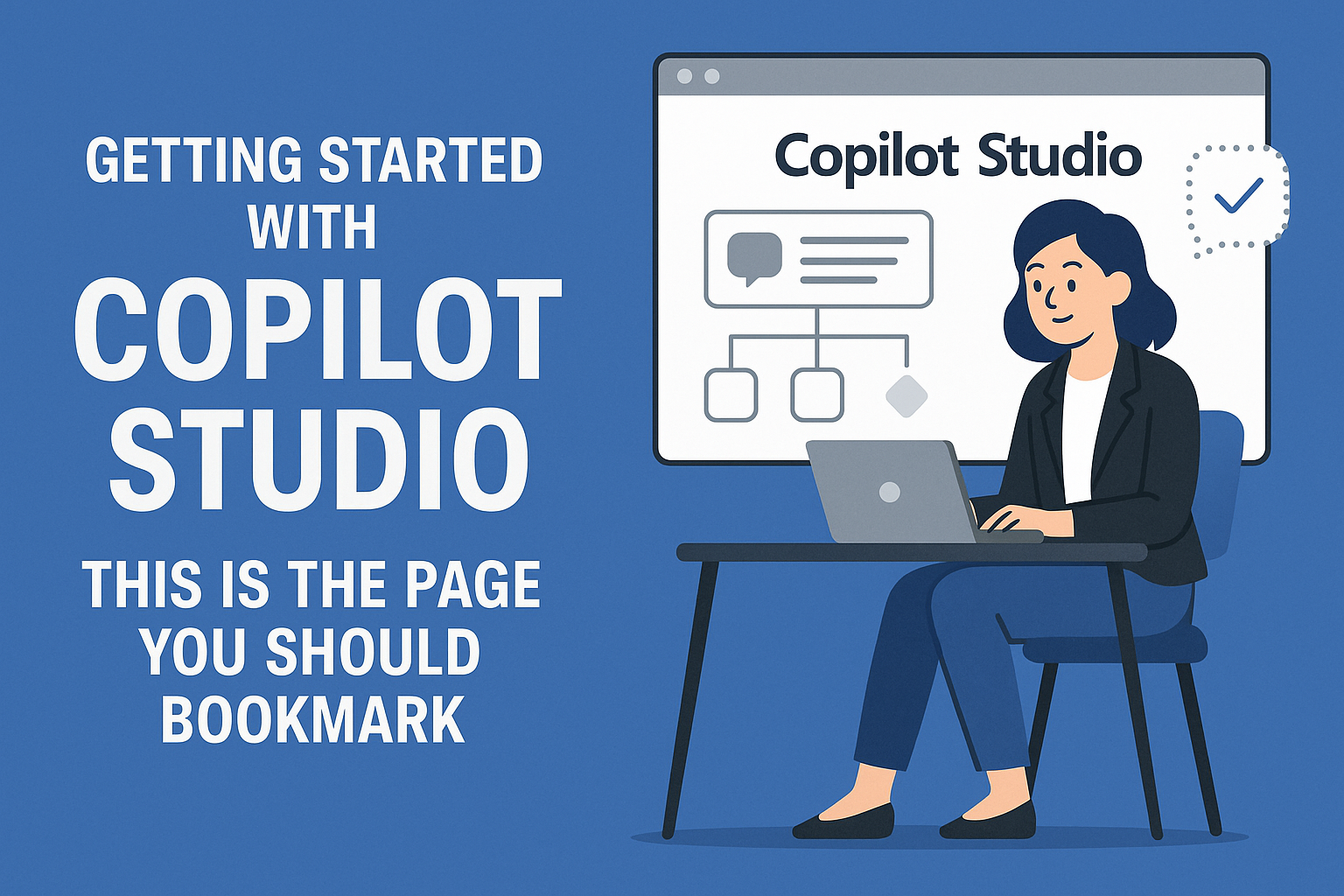There’s no denying it. AI agents are here to stay, and Microsoft Copilot Studio is becoming the tool that businesses are using to start build their own.
We’re now at a stage where it’s not just about experimenting with AI. It’s about putting real solutions in place that solve real problems. But here’s the challenge I keep running into with clients and colleagues alike:
“We’re interested in Copilot Studio… but we’re not sure where to begin — or what it means for us.”
That’s completely fair. Copilot Studio is incredibly powerful, but also multi-layered. It touches business users, makers, IT, and data teams. And while the potential is exciting, it can quickly become overwhelming without a clear roadmap.
So if you’re in that boat, whether you’re just starting out or looking to scale responsibly. Let me point you to a resource that’s genuinely worth your time:
🔗 The official Copilot Studio Adoption page
🎯 Now, whats that?
This isn’t just another generic product overview or marketing page. Microsoft has done something really smart here: They’ve created a central hub tailored to your role in the organization.
It answers different questions for different stakeholders, because let’s face it, a business analyst, a low-code developer, and an IT admin don’t need the same type of guidance.
Here’s how the content breaks down:
For Business Users
If you’re exploring what AI could actually do in your day-to-day. This section is for you.
It focuses on value-driven use cases and practical examples, not technical deep dives. You’ll get clarity on what AI agents can help with, from automating repetitive tasks to improving internal support processes, without needing a technical background.
It’s perfect if you want to lead or champion AI adoption in your team without being the one writing expressions or building agent flows.
For Creators & Makers
So, you’re hands-on and want to build something today? Microsoft has you covered.
This section walks you through the process of creating, testing, and deploying agents using the low-code tools available in Copilot Studio. It covers how to structure topics, connect to data, and bring in generative AI to enhance the conversation experience.
The tone is approachable, but still detailed enough for makers with Power Platform experience. It also links out to learning paths and documentation if you want to go deeper.
For IT Leaders & Platform Owners
And of course, no serious AI implementation is complete without governance. Can’t really stress this enough!
This section speaks directly to the people responsible for security, scalability, compliance, and long-term platform health. It shows how Copilot Studio fits into your broader Power Platform strategy, including how it works with existing ALM practices, admin tools, and security models.
Whether you’re a Power Platform admin or an IT lead, you’ll find insights here that help you move from “cool prototype” to something that can scale safely and predictably.
🔍 My thoughts?
- It’s not overwhelming, the site is clean, well-structured, and gets to the point.
- It meets you where you are, whether you’re just curious or already building.
- It reinforces the idea that AI adoption isn’t one-size-fits-all. And that’s the key to long-term success.
In a world where AI rollouts often start in silos or without alignment between business and IT, this type of resource is gold. It encourages collaboration from day one.
If your organization is exploring Copilot Studio, or if you’re already using it and want to scale in a more structured way, I highly recommend making this page your starting point.
It’s one of those pieces of documentation that’s actually built for real people doing real work. Not just developers, not just leaders, but everyone involved in driving AI adoption forward.
If you’re already using the platform, I’d love to hear what’s working for you, what challenges you’re running into, or how your team is approaching governance and value creation with AI agents. Let’s compare notes and keep learning together.


